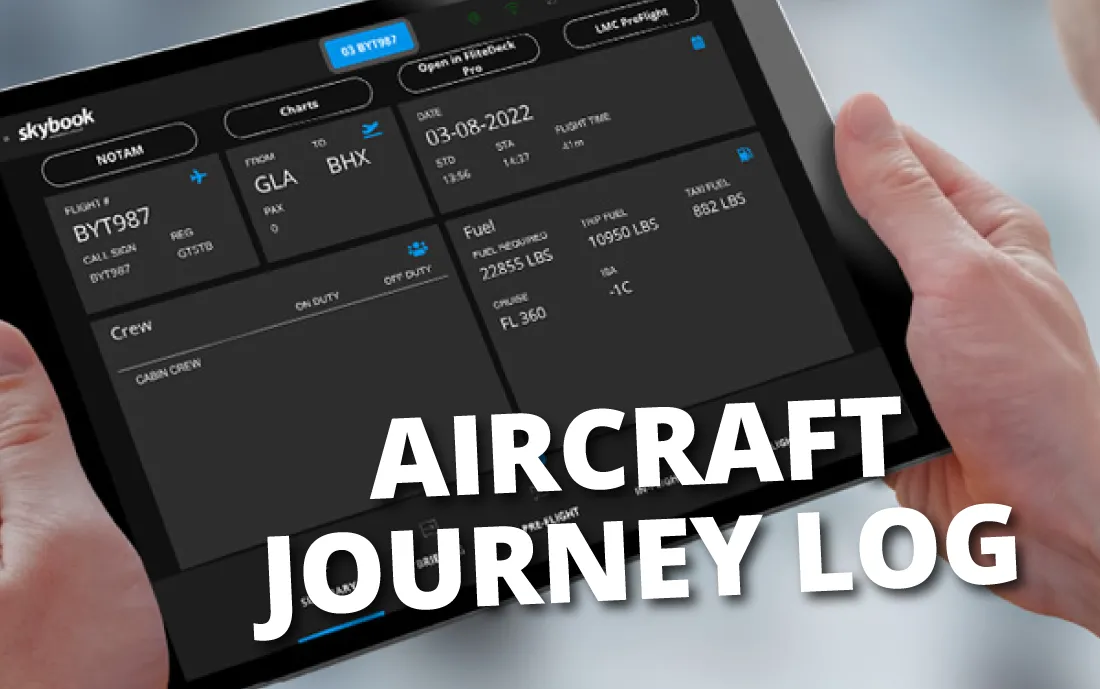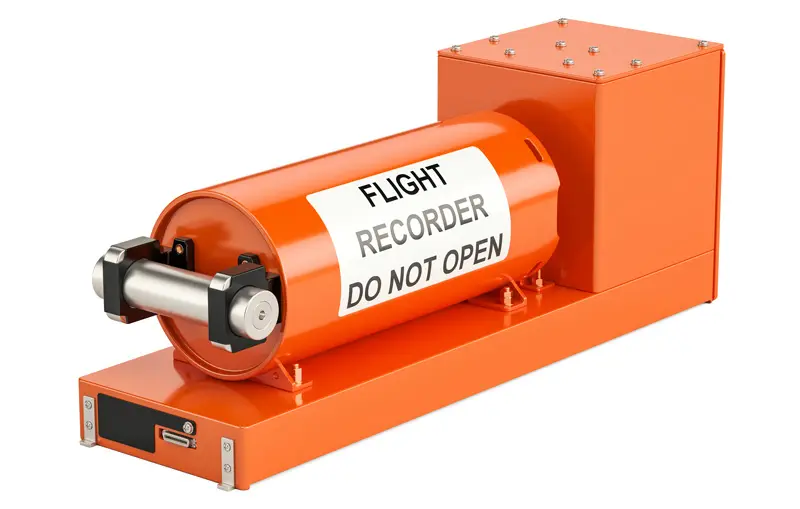
The benefits of a digital aircraft journey log
In this article, we examine the distinctions between flight operations data and flight data monitoring (FDM) and how both play a complementary role in helping airlines improve the safety, efficiency, and performance of their aviation operations.
Flight Data Monitoring (FDM) is a safety program in which flight data is frequently downloaded directly from an aircraft flight recorder during flight and accessed by ground personnel.
The purpose of a FDM program is to improve flight safety and efficiency by identifying trends, potential risks, and areas for improvement based on data from various onboard systems.

Whereas Flight Operations Data refers to the comprehensive set of information collected during the planning, execution, and monitoring of a flight.
Flight operations data is critical for ensuring safety, optimising operational efficiency, and making informed decisions during each phase of flight. Pilots access the data via an electronic flight bag (EFB) device.
With various categories of information, from pre-flight to post-flight, that are used by pilots, dispatchers, and ground crew.
This data is increasingly being integrated into a centralised flight data system to improve efficiency and streamline workflows for flight operations teams.

Data Collection
FDM uses data recorded by aircraft's systems, such as the Flight Data Recorder (FDR), Quick Access Recorder (QAR), or the Aircraft Communications Addressing and Reporting System (ACARS). This can include altitude, speed, engine performance, and control inputs.
Analysis
The collected data is downloaded and analysed to identify unusual or unsafe occurrences like excessive descent rates, unstable approaches, near-misses, inefficient fuel usage, or deviations from standard procedures.
This process helps airlines optimize flight performance and reduce operational costs, including fuel consumption.
Prevention & Training Improvement
Using the data to identify any risks, improvements can be made, such as additional training programs for pilots, operational changes, or technical adjustments to the aircraft. Airlines may also refine their Standard Operating Procedures (SOPs).
Flight Plans
A vital document that outlines the intended flight route, with information such as departure and destination airports, cruising altitude, fuel requirements, and the estimated journey time. Flight plan data can be integrated into EFBs and ground dispatch systems.
Fuel Planning & Aircraft Performance
With the aid of an EFB application, pilots can make use of their journey log for inputting data for fuel and performance. Calculations for fuel required based on distance, weight, weather, and alternate airports. Data on aircraft weight, engine settings, climb rates, cruise altitudes and landing performance.
Weather Data
METAR and TAF provide the current and forecasted weather reports for airports, these are visualised on EFB apps with briefing charts, navigation waypoint charts and interactive route maps. Including other data such as Significant Weather (SIGWX) Charts, turbulence, icing, thunderstorms, and jet streams.
NOTAMs
NOTAMs are Alerts about changes or hazards in airspace, such as runway closures, airspace restrictions, or equipment outages. Have you seen the NOTAM management tool for simplifying and filtering priority NOTAM flight operations data.
Aircraft Status and Maintenance
Minimum Equipment List (MEL) is a documented list of aircraft components and systems that may be inoperative under specific conditions. Here’s how MEL integrates on EFB. Aircraft Serviceability information about maintenance schedules, defects, and operational status of key systems.
Air Traffic Control (ATC) Data
Clearances are Instructions from ATC on departure, en route, and landing procedures. Also including information about altitude restrictions, airspace congestion, or reroutes.
Passenger and Cargo Weights
Data for calculating aircraft’s center of gravity and ensuring proper weight and balance. This Includes weight limits for maximum take-off and landing weights, and fuel limits based on load distribution.
Operational Performance Data
Information ensuring that pilots and crew comply with flight time and duty regulations. Including turnaround time data, the time required for refueling, boarding, and preparing the aircraft for the next flight.
Post-Flight Data
Post-flight analysis which can include fuel usage and performance reports showing data such as actual vs. planned fuel burn during the flight, and fuel efficiency metrics. Analytics for flight delays, incident reports, showing delay code data, OTP, KPI metrics, and deviations from the flight plan or operational issues.
By utilising post-flight data airlines can optimise fuel usage, aim to reduces delays, and improves overall flight planning and operational efficiency.

Flight operations data and Flight Data Monitoring (FDM) both play a role in improving the overall safety, efficiency, and performance of aviation operations. Here's how they tie in...
Performance and Safety Analysis
FDM uses flight operations data to monitor and analyse deviations or anomalies in flight performance. This helps identify potential safety risks and inefficiencies.
By correlating operational data (such as weather or flight plans) with flight performance, airlines can better understand what causes certain risks or issues.
Aircraft Interface Device
The Aircraft Interface Device (AID) is a hardware platform, that bridges the gap between avionics systems and electronic flight bags (EFBs). Which will allow flight operations to collect more real-time flight data directly from the aircraft.
Real-Time Monitoring
Integrated flight operations data in FDM allows airlines to monitor flights in real time. If a flight experiences any operational or safety concern, FDM could detect it and trigger immediate responses, improving operational control and safety measures.
Post-Flight Reporting
Both flight operations data and FDM contribute to post-flight analyses. Flight operations data offers insight into how well a flight adhered to its original plan, while FDM provides detailed metrics on actual flight performance, which can then be used to adjust future operations or improve pilot training.
Compliance and Auditing
Combining flight operations data with FDM ensures that airlines meet regulatory requirements and maintain compliance. Airlines can access a historic flight data which securely stores all flight operations data into a flight summary with easy access to reports.
Is your flight operations data and the pilot EFB devices seamlessly integrating all the information back to a central data system? Why not learn more about the skybook EFB & ground portal, to see if we can streamline your airline further.
Get access to our latest news & skybook updates